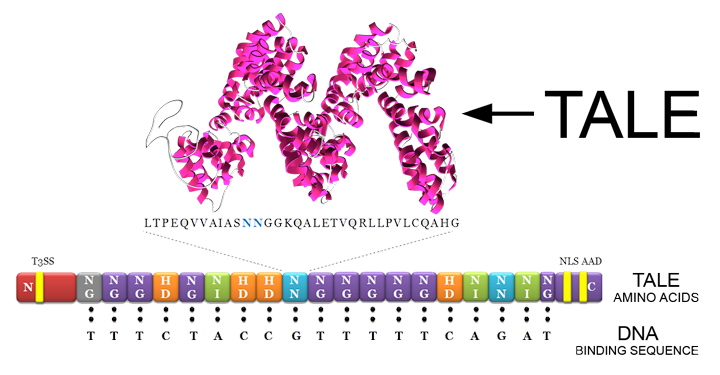Part:BBa_K1189030
TALE-B with a his6 tag linked to a K coil under an inducible lacI promoter
E/K coils are synthetic coiled-coil domains designed specifically to bind to each other with high affinity and specificity (Litowski and Hodges, 2002) (Figure 1). They are composed of a heptad repeat that forms a coil structures that are able to interact with each other. These coils are able to interact with each other in an anti-parallel fashion that makes them useful for applications such as peptide capture, protein purification and in biosensors. For our project we decided to make use of the IAAL E3/K3 coils (BBa_K118901, BBa_K1189011) due to the balance they offer between affinity and specificity (Table 1).
Figure 1. Ribbon visualization of the E3/K3 IAAL coiled-coils.
| Coil Name | Peptide Sequence |
| IAAL E3 | NH2-EIAALEKEIAALEKEIAALEK-COOH |
| IAAL K3 | NH2-KIAALKEKIAALKEKIAALKE-COOH |
These E3/K3 coils are able to form heterodimers due to the hydrophobic residues contained within the heptad repeat. In our case these are isoleucine and leucine residues. Designated by empty arrows in the helical wheel diagram below (Figure 2) these residues form the core of the binding domain of the coils. In order to prevent the homodimerization of these coils charged residues are included in the design. The electrostatic interactions between glutamic acid and lysine residues prevent an E-coil from binding with an E-coil for example. These parts were already in the registry, however the DNA was never received, so we built, sequenced and re-submitted them.

Figure 2. A helical wheel representation of the IAAL E3/K3 coiled-coil heterodimer viewed as a cross-section based off of a similar figure created by Litowski and Hodges (2002). The peptide chain propagates into the page from the N- to the C- terminus. Hydrophobic interactions between the coils are indicated by the clear wide arrows. The intermolecular electrostatic interactions between the coils are displayed by the thin curved arrow (eg. Between Glu15 and Lys20) Letters a, b, c,and d designate the positions of IAAL repeat in the heptapeptide. The e and g positions are occupied by the charged residues.
Sequence and Features
- 10COMPATIBLE WITH RFC[10]
- 12COMPATIBLE WITH RFC[12]
- 21INCOMPATIBLE WITH RFC[21]Illegal BamHI site found at 2654
- 23COMPATIBLE WITH RFC[23]
- 25COMPATIBLE WITH RFC[25]
- 1000COMPATIBLE WITH RFC[1000]
| None |

